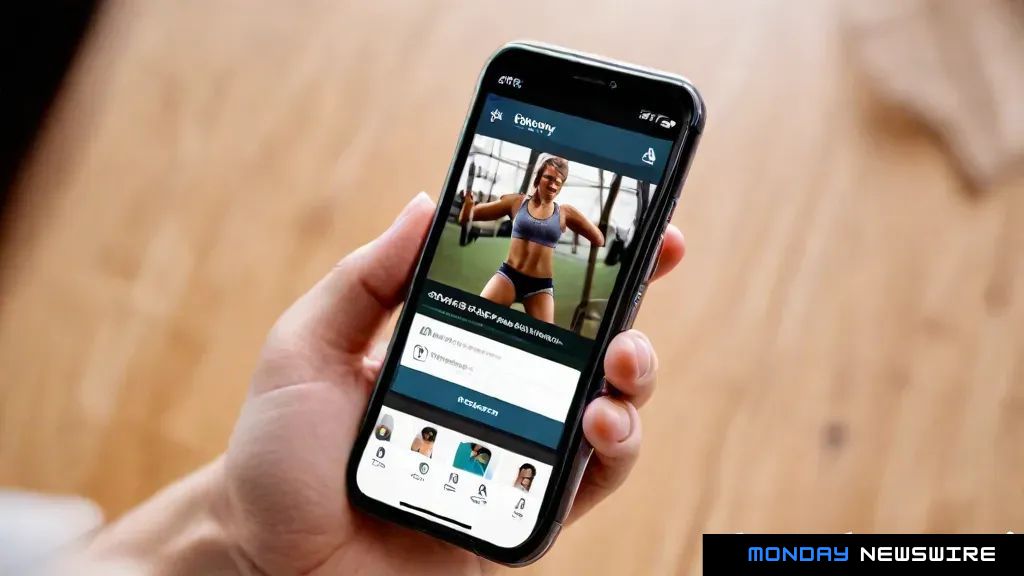New Approaches in Fitness Apps for the U.S. Market
Today, fitness apps are one of the most popular tools that help millions of US citizens maintain a healthy lifestyle. These apps provide individual recommendations, and encouragement, and enable the user to monitor activities at their disposal. Due to the constant evolution in the technologies, there is every indication that more development is being made to make fitness apps more informative and fun. This article looks at some of the best fitness apps in the U.S. market and how these innovations are changing the way people take their workouts. Better Personalization and Customization AI-Powered Personal Trainers: The latest feature that is making fitness apps extremely popular is the inclusion of artificial intelligence in developing fitness programs. This concept of personal trainers is based on the information given by the user, including the fitness goals, current fitness assessment, and personal preferences, to come up with personalized workouts. Some of them include Freeletics and Fitbod; they incorporate artificial intelligence in their programs to design workout routines that change with the user’s progress to keep the training session as effective as possible. These artificially intelligent trainers can give real-time feedback about the form and techniques, thus minimizing the possibility of injuries. In the long run, through effective implementation of the machine learning algorithm, the application might be in a position to recommend appropriate types of workouts from the database given different users’ behaviors. Dynamic Workout Plans: The next technological improvement in workout apps is the creation of dynamic workout programs that may be adjusted according to the user’s performance and improvement. For example, if an exercise becomes too difficult or too easy, then the app changes the plan based on the user’s preferences. This is not only a great way of shocking the muscles and avoiding plateaus but also of keeping the users engaged. Nike Training Club and JEFIT are some of the workout apps that have unique plans of workout for weight loss, muscle gain, endurance, and flexibility to make the user excited about working out. Unique Health Tracking Features Comprehensive Health Metrics: Advanced apps for health monitoring and tracking are not limited to simple monitoring of physical activity, as the new versions seek to give a full view of the health trends of the user. Such apps can track the pulse rate, the quality of sleep, the number of calories consumed or expended, and stress levels. MyFitnessPal and Fitbit are two examples of fitness apps that use these extensive health measurements, so users can make the right decisions concerning their fitness practices and health in general. When used in conjunction with wearable devices, health-tracking apps can provide real-time data on activities as well as long-term information. The said information enables the users to make modifications to their lifestyle, and they will be able to have a better fitness results. Advanced Sleep Monitoring: It is well understood that sleep plays an important role in the body’s ability to recover and improve one’s health, and incorporating detailed sleep tracking abilities in fitness apps is rapidly evolving. Some applications, such as Sleep Cycle and WHOOP, monitor the sleep cycles and the heart rate during the night and suggest ways of enhancing the quality of sleep. Due to the effect of sleep on physical performance, users will be able to manage their energy and improve their workouts. Interactive and Engaging User Experiences Gamification and Social Features: Mobile fitness apps utilize both game design features and social-enhancing aspects to enhance the exercise experience. By incorporating principles from game design, including goals, scores, and incentives like Strava, Zombies, and Run! convert exercises into games that involve some sort of competition. This is done through achieving certain scores or levels, challenging friends, and engaging in community challenges, all of which create a sense of accomplishment among the users. The social features also have a very significant impact on increasing user experience. Most fitness apps provide the user with the ability to share their progress, join some groups of people, and communicate with others who have the same objectives. These social interactions give the users the morale, encouragement, and even pressure to make sure that they continue with the program to achieve their fitness goals. Virtual and Augmented Reality Workouts: Virtual reality (VR) and augmented reality (AR) are technologies that are currently in the process of changing the fitness industry. Supernatural and BOXVR are some of the popular VR fitness apps that make users exercise in different environments. These apps provide users with ‘virtual tours’ of cardio classes and strength and rhythm exercises to help users exercise more and without getting bored. While traditional fitness apps replace reality, augmented reality fitness apps augment reality by overlaying images of the physical environment, improving conventional workouts. There are more specialized apps like AR Runner and Fitness AR, which offer an augmented reality exercising app that gives a new dimension to exercising both indoors and outdoors. Device Agnosticism and Biofeedback Device Agnosticism: Fitness apps are developed to be compatible with any wearable products such as smartwatches, fitness trackers, heart rate monitors, and smart scales, among others. This device independence enables users to capture even more data, which gives a full picture of a user’s health and fitness. Some of them are Health, the official app for Apple devices, and Google Fit, which gathers information from other connected devices and provides an integrated view of the user’s fitness. These fitness apps link with other devices to give real-time information, which enables individuals to monitor their progress and make the right decisions concerning their exercise regimes. Biofeedback and Real-Time Monitoring: Some of the new enhancements that are available in the current sophisticated fitness apps include biofeedback and real-time monitoring, which present physiological information to the users. These apps, via sensors and wearables, give real-time information about the users’ heart rates, breathing, and muscle movement. Biofeedback is the use of devices such as Bioforce HRV and Spire; the devices assist the user in dealing with anxiety during workouts to enhance performance. Real-time monitoring enables



Comments ( 0 )